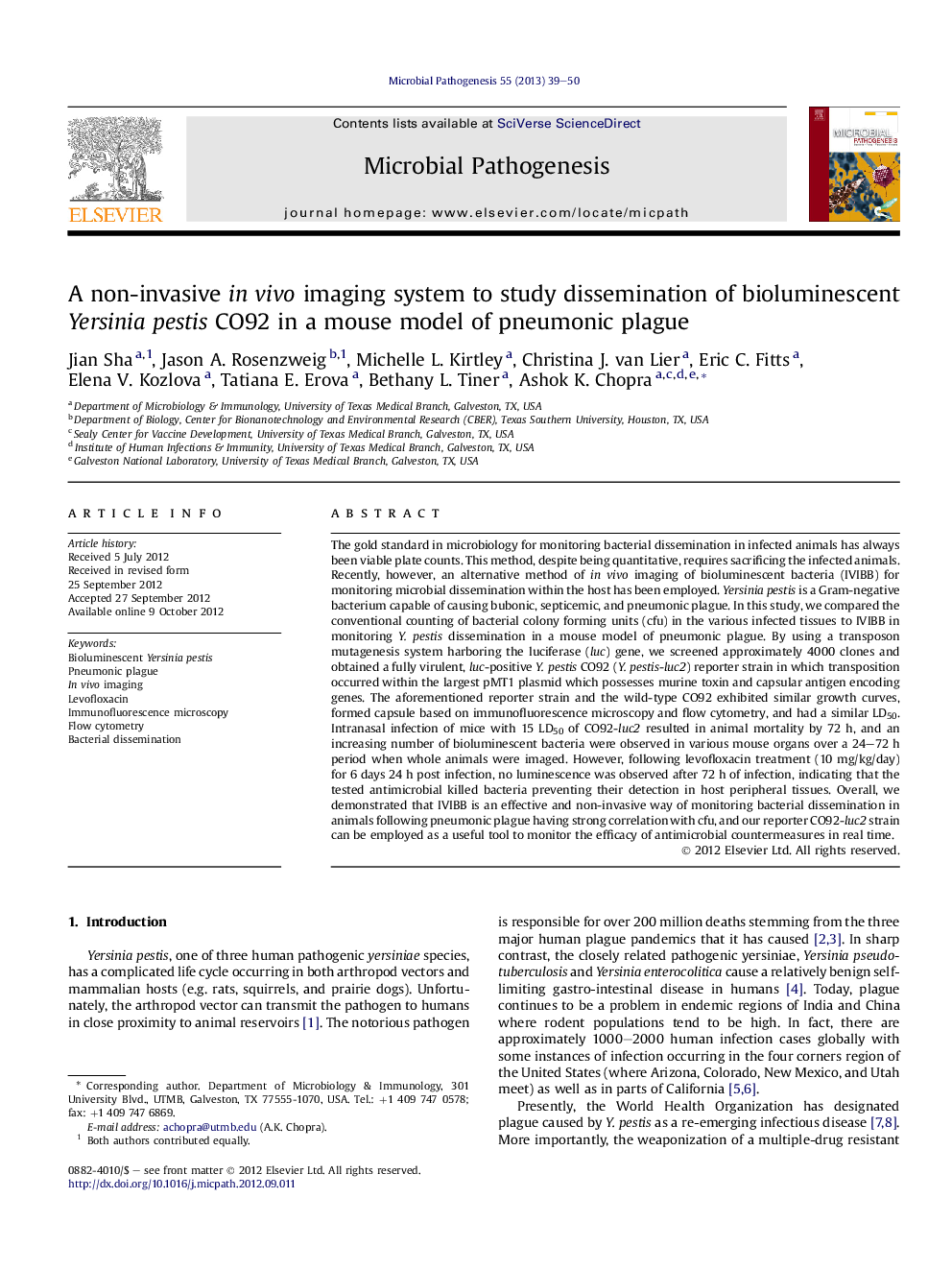| کد مقاله | کد نشریه | سال انتشار | مقاله انگلیسی | نسخه تمام متن |
|---|---|---|---|---|
| 3416687 | 1593728 | 2013 | 12 صفحه PDF | دانلود رایگان |

The gold standard in microbiology for monitoring bacterial dissemination in infected animals has always been viable plate counts. This method, despite being quantitative, requires sacrificing the infected animals. Recently, however, an alternative method of in vivo imaging of bioluminescent bacteria (IVIBB) for monitoring microbial dissemination within the host has been employed. Yersinia pestis is a Gram-negative bacterium capable of causing bubonic, septicemic, and pneumonic plague. In this study, we compared the conventional counting of bacterial colony forming units (cfu) in the various infected tissues to IVIBB in monitoring Y. pestis dissemination in a mouse model of pneumonic plague. By using a transposon mutagenesis system harboring the luciferase (luc) gene, we screened approximately 4000 clones and obtained a fully virulent, luc-positive Y. pestis CO92 (Y. pestis-luc2) reporter strain in which transposition occurred within the largest pMT1 plasmid which possesses murine toxin and capsular antigen encoding genes. The aforementioned reporter strain and the wild-type CO92 exhibited similar growth curves, formed capsule based on immunofluorescence microscopy and flow cytometry, and had a similar LD50. Intranasal infection of mice with 15 LD50 of CO92-luc2 resulted in animal mortality by 72 h, and an increasing number of bioluminescent bacteria were observed in various mouse organs over a 24–72 h period when whole animals were imaged. However, following levofloxacin treatment (10 mg/kg/day) for 6 days 24 h post infection, no luminescence was observed after 72 h of infection, indicating that the tested antimicrobial killed bacteria preventing their detection in host peripheral tissues. Overall, we demonstrated that IVIBB is an effective and non-invasive way of monitoring bacterial dissemination in animals following pneumonic plague having strong correlation with cfu, and our reporter CO92-luc2 strain can be employed as a useful tool to monitor the efficacy of antimicrobial countermeasures in real time.
► A bioluminescent Yersinia pestis strain expressing luciferase (luc) gene was generated.
► Y. pestis-luc2 strain exhibited similar virulence in mice as the parental strain.
► By 48 h post infection, bioluminescence can be seen in mouse organs by imaging.
► No bioluminescence was seen in animals given levofloxacin 24 h after infection.
► Strong correlation was noted between bioluminescence and colony forming units.
Journal: Microbial Pathogenesis - Volume 55, February 2013, Pages 39–50